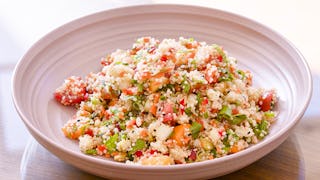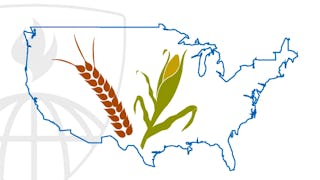Around the world, we find ourselves facing global epidemics of obesity, Type 2 Diabetes and other predominantly diet-related diseases. To address these public health crises, we urgently need to explore innovative strategies for promoting healthful eating. There is strong evidence that global increases in the consumption of heavily processed foods, coupled with cultural shifts away from the preparation of food in the home, have contributed to high rates of preventable, chronic disease. In this course, learners will be given the information and practical skills they need to begin optimizing the way they eat. This course will shift the focus away from reductionist discussions about nutrients and move, instead, towards practical discussions about real food and the environment in which we consume it. By the end of this course, learners should have the tools they need to distinguish between foods that will support their health and those that threaten it. In addition, we will present a compelling rationale for a return to simple home cooking, an integral part of our efforts to live longer, healthier lives.

Gain next-level skills with Coursera Plus for $199 (regularly $399). Save now.

(34,104 reviews)
Skills you'll gain
Details to know

Add to your LinkedIn profile
4 assignments
See how employees at top companies are mastering in-demand skills

There are 5 modules in this course
In this section, we will examine the social and cultural shifts that have contributed to our modern epidemics of overweight and obesity. We will briefly review the nutrients found in foods, their different functions in the human body, and how we can support our own health by choosing wisely from the foods within each category. Additionally, we will explore the ways in which highly processed foods differ from real, whole food and the implications of food processing on our health. We’ll look at how our consumption of sugar has changed in recent decades and explore sensible solutions for those wishing to start eating better. We will also meet Kevin, a middle-aged pre-diabetic man, and find out how a step-wise approach to behavior change helped him improve his health.
What's included
11 videos2 assignments
This section focuses on sustainable solutions to the challenge of choosing healthier foods more frequently. Michael Pollan explains his mantra and how we can use it to make better food choices. We also begin to explore practical tips for preparing foods that will support our health and enjoyment.
What's included
4 videos1 assignment
In this section you will find more practical tips for grocery shopping, reading labels and assembling a balanced meal. We also learn more about the most important secret ingredient for success: moderation.
What's included
4 videos1 assignment
A few years ago, a friend of mine started a healthy eating and fitness website called Grokker. She asked me to make some instructional cooking videos and generously agreed to share some of them with you. Thanks, Lorna! (If you like this section, you can find many more great videos on cooking and fitness at Grokker.com)
What's included
10 videos10 readings
Here is a list of recommended books and videos that can help deepen your understanding of the course material. Feel free to explore the recommendations on this list to learn more about food, health, eating behaviors, and more.
What's included
3 readings
Instructor

Offered by
Explore more from Nutrition
 Status: Free Trial
Status: Free TrialStanford University
 Status: Preview
Status: PreviewStanford University
 Status: Free Trial
Status: Free TrialStanford University
 Status: Preview
Status: PreviewJohns Hopkins University
Why people choose Coursera for their career




Learner reviews
34,104 reviews
- 5 stars
79.59%
- 4 stars
15.64%
- 3 stars
3.42%
- 2 stars
0.75%
- 1 star
0.57%
Showing 3 of 34104
Reviewed on Dec 10, 2023
This was amazing course learnt many new things about concept of foods and nutrients. Thank you Stanford university team for this opportunity, looking forward for such many course. Thank you for this!!
Reviewed on Mar 10, 2023
This course has a lot of great information on nutrition and simple eating without being overwhelming. It gives practical advice that anyone seeking to eat healthier can implement in their daily lives.
Reviewed on May 13, 2021
Really good as an introductory guide to general human nutrition. Gives great insights on cooking, planning meals and health diet habits. It's a rather short course with actually impactful information.
Frequently asked questions
To access the course materials, assignments and to earn a Certificate, you will need to purchase the Certificate experience when you enroll in a course. You can try a Free Trial instead, or apply for Financial Aid. The course may offer 'Full Course, No Certificate' instead. This option lets you see all course materials, submit required assessments, and get a final grade. This also means that you will not be able to purchase a Certificate experience.
When you purchase a Certificate you get access to all course materials, including graded assignments. Upon completing the course, your electronic Certificate will be added to your Accomplishments page - from there, you can print your Certificate or add it to your LinkedIn profile.
Yes. In select learning programs, you can apply for financial aid or a scholarship if you can’t afford the enrollment fee. If fin aid or scholarship is available for your learning program selection, you’ll find a link to apply on the description page.
More questions
Financial aid available,





